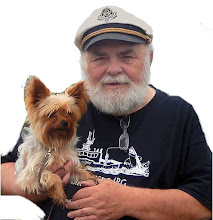Labels
Support Our Sealers
Harvesting seals is a necessary evil, like harvesting cattle is a necessary evil.
Tuesday, April 27, 2010
Minister Shea Increases Quota for Atlantic Seal Harvest
12:48 PM | Posted by
Gary LeDrew |
Edit Post
March 15, 2010
OTTAWA – The Honourable Gail Shea, Minister of Fisheries and Oceans, today announced an increase in the total allowable catch (TAC) for harp seals for the 2010 Atlantic seal harvest.
“Our government recognizes the importance of the sealing industry to the people and the economies of Canadian coastal communities,” said Minister Shea. “Ongoing efforts are made to ensure our management decisions include the perspective of our scientists, as well as the input of Canadians in Atlantic Canada, Quebec and the North who work and depend on the industry for their livelihood.”
The 2010 TAC for harp seals has been increased to 330,000. With a potential population range between 6 million and 7.7 million, the current estimate is approximately 6.9 million, or more than triple what it was in the 1970s.
The one year total for the harp seal TAC includes a developmental allocation of 20,000 seals to support three value-added projects proposed by the sealing industry in Atlantic Canada. These new projects are part of Fisheries and Oceans Canada’s ongoing efforts to encourage the industry to make the fullest possible use of the harvested animals.
Consistent with previous regional shares, about 70% of the TAC is allocated to the Front (waters east of Newfoundland and Labrador), while the Gulf of St. Lawrence receives about 30% of the TAC.
The TAC for the grey and hooded seals remain the same as last year’s, with respectively 50,000 and 8,200 animals. The estimated populations of the grey and hooded seal herds are over 300,000 and 600,000 respectively and continue to grow every year.
Effective immediately, the freeze on personal use licenses has been lifted. Coastal Canadians will be eligible to apply for a licence to hunt up to six seals per season for personal use. Every sealer must follow the Marine Mammal Regulations dealing with sealing methods, including the three-step process for harvesting seals, as well as all other licence conditions required by DFO.
“This Government is united in its support of the thousands of coastal Canadian sealers who rely on the seal hunt for their livelihood. The seal hunt is a sustainable activity based on sound conservation principles,” said Minister Shea.
“This Government is united in its support of the thousands of coastal Canadian sealers who rely on the seal hunt for their livelihood. The seal hunt is a sustainable activity based on sound conservation principles,” said Minister Shea.
Fishery Officers will be rigorously monitoring this year’s harvest to ensure compliance with the regulations and licence conditions and will take enforcement action when necessary.
Individuals will also again be permitted to observe the harvest from a safe distance, as per the conditions set out in the Marine Mammal Regulations. While the Department of Fisheries and Oceans respects the right of individuals to voice their opinions about the seal harvest, observers are reminded that they must remain at least 10 metres from sealing activities at all times and are not to disrupt these activities or to act in a manner that threatens the safety of sealers, law enforcement officers or other observers.
To learn more about the seal harvest, visit: http://www.dfo-mpo.gc.ca/seal
- 30 -
For more information:
Nelson Kalil
Media Relations
Fisheries and Oceans Canada
Ottawa
613-990-7537
Media Relations
Fisheries and Oceans Canada
Ottawa
613-990-7537
Nancy Bishay
Press Secretary
Office of the Minister
Fisheries and Oceans Canada
613-992-3474
Press Secretary
Office of the Minister
Fisheries and Oceans Canada
613-992-3474
NR-HQ-10-11E
Subscribe to:
Post Comments (Atom)

0 comments:
Post a Comment